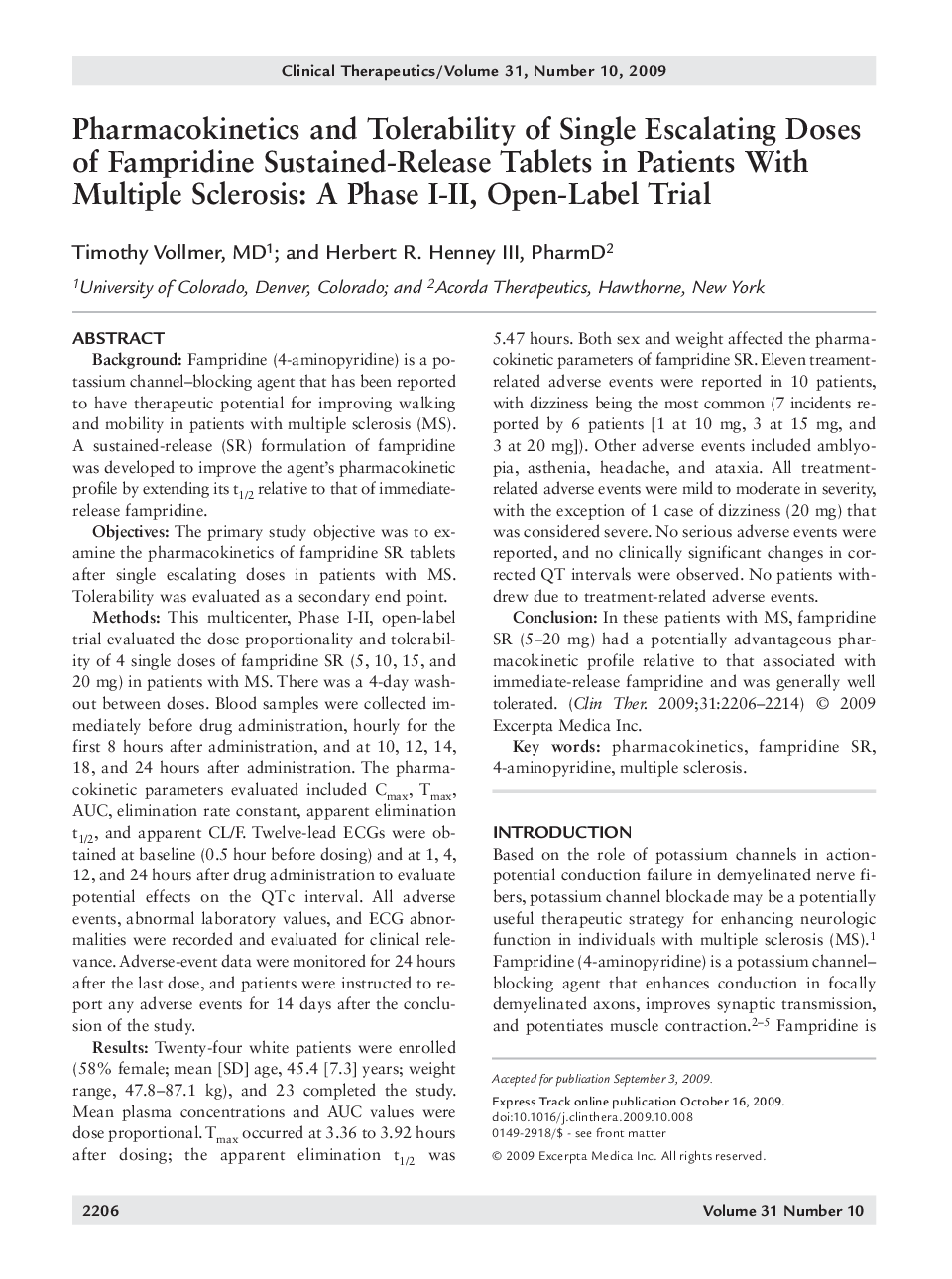| کد مقاله | کد نشریه | سال انتشار | مقاله انگلیسی | نسخه تمام متن |
|---|---|---|---|---|
| 2528302 | 1119963 | 2009 | 9 صفحه PDF | دانلود رایگان |

Background: Fampridine (4-aminopyridine) is a potassium channel-blocking agent that has been reported to have therapeutic potential for improving walking and mobility in patients with multiple sclerosis (MS). A sustained-release (SR) formulation of fampridine was developed to improve the agent's pharmacokinetic profile by extending its t½ relative to that of immediaterelease fampridine.Objectives: The primary study objective was to examine the pharmacokinetics of fampridine SR tablets after single escalating doses in patients with MS. Tolerability was evaluated as a secondary end point.Methods: This multicenter, Phase I–II, open-label trial evaluated the dose proportionality and tolerability of 4 single doses of fampridine SR (5, 10, 15, and 20 mg) in patients with MS. There was a 4-day washout between doses. Blood samples were collected immediately before drug administration, hourly for the first 8 hours after administration, and at 10, 12, 14, 18, and 24 hours after administration. The pharmacokinetic parameters evaluated included Cmax, Tmax, AUC, elimination rate constant, apparent elimination t½, and apparent CL/F. Twelve-lead ECGs were obtained at baseline (0.5 hour before dosing) and at 1, 4, 12, and 24 hours after drug administration to evaluate potential effects on the QTc interval. All adverse events, abnormal laboratory values, and ECG abnormalities were recorded and evaluated for clinical relevance. Adverse-event data were monitored for 24 hours after the last dose, and patients were instructed to report any adverse events for 14 days after the conclusion of the study.Results: Twenty-four white patients were enrolled (58% female; mean [SD] age, 45.4 [7.3] years; weight range, 47.8–87.1 kg), and 23 completed the study. Mean plasma concentrations and AUC values were dose proportional. Tmax occurred at 3.36 to 3.92 hours after dosing; the apparent elimination t½ was 5.47 hours. Both sex and weight affected the pharmacokinetic parameters of fampridine SR. Eleven treamentrelated adverse events were reported in 10 patients, with dizziness being the most common (7 incidents reported by 6 patients [1 at 10 mg, 3 at 15 mg, and 3 at 20 mg]). Other adverse events included amblyopia, asthenia, headache, and ataxia. All treatmentrelated adverse events were mild to moderate in severity, with the exception of 1 case of dizziness (20 mg) that was considered severe. No serious adverse events were reported, and no clinically significant changes in corrected QT intervals were observed. No patients with-drew due to treatment-related adverse events.Conclusion: In these patients with MS, fampridine SR (5–20 mg) had a potentially advantageous pharmacokinetic profile relative to that associated with immediate-release fampridine and was generally well tolerated.
Journal: Clinical Therapeutics - Volume 31, Issue 10, October 2009, Pages 2206-2214